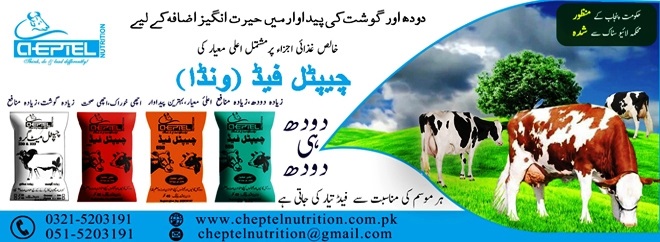 |
Pak Dairy Info
|
Home || Our Team || Dedication || Acknowledgement || Downloads || Articles || Site Map || References || Contact Us || Feedback ![]()
|
||||||
| Record Keeping | ||||||
|
||||||
|
|||||||
|
Milking of animal should be stopped two months before parturition. This is called dry period of animal. Dry period is necessary for four purposes:
Cows which are not given dry period do not produce sufficient milk There are three ways to dry:
|
|
||||||
At the time of dry-off, cattle are at various levels of milk production. It is thought that reducing milk production before dry-off may help to dry-off the mammary gland quicker and reduce milk leakage. Lowering milk production before dry off can be achieved by reducing the amount of concentrates in the diet and by feeding low energy forages. Water intake should also be curtailed. Dietary changes need to be made gradually. This especially is important in case of animals producing more than 15 litres milk per day. It is recommended that all low yielding animals be dried off abruptly since it will minimize total stress and is easier to manage. Dry period of 45-60 days is advisable. Less than 45 days is not useful and above 60 days is not economical.
Dry dairy animals should be divided into early/mid and late dry groups. The late or close-up group would comprise those animals that are expected to calve within 2 to 4 weeks. The early/mid dry group should consist of other animals, recognizing that those which have been dried off might need more critical observation and care. The primary objective of dry animal nutrition is to optimize milk yield, reproduction and health in the subsequent lactation by starting to control negative energy balance and mineral metabolism in dry period and to avoid occurrence of fatty liver, milk fever and other associated diseases. During the close-up period, dry animals should be on a rising plan of nutrition to compensate for decreasing feed intake, to prevent negative energy balance and subsequent mobilization of adipose tissue, and to meet nutrient requirements of advanced pregnancy. Such a ration should contain small amounts of the same forages and concentrates as fed to lactating dairy animals. The change to a higher grain diet in the close-up period must be made gradually. The additional concentrate will not only help the rumen adapt to the higher starch contents of the ration in early lactation, but will also provide the nutrients necessary for the growing fetus and other organ changes that are occurring in preparation for lactation. The crude protein content of dry animal close-up ration should be 13 to 14 % on a dry matter basis. Additional undegradable protein fed during late gestation may improve body condition at calving, subsequent milk yield, reproductive performance, and result in fewer health disorders. Dry animal must also be provided with sufficient amount of mineral and vitamins. During close up period animal should not be given excessive amount of calcium as due to negative feedback mechanism it may stop the release of calcium from body and may lead to milk fever after parturition.
|
|||||||
|
Copyrights © Dr. M Jassar Aftab, All Rights Reserved |
|||||||






